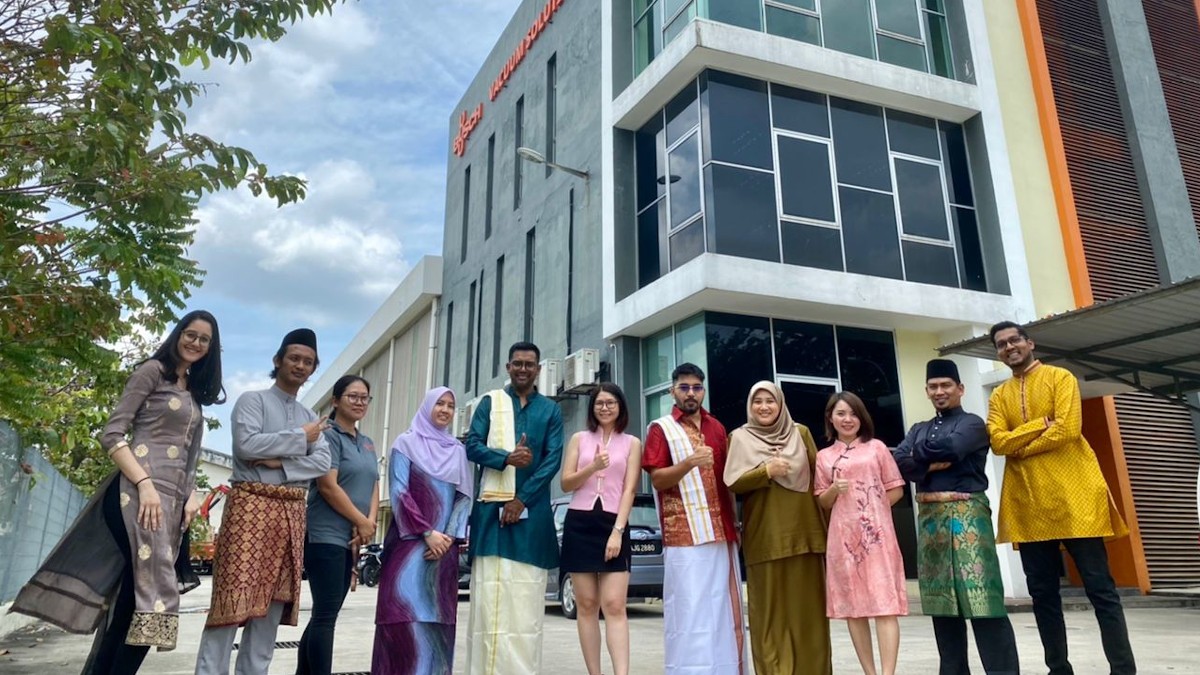Ever since Busch Malaysia was established in 1998, it has been a multicultural and multiethnic company. To this day, this diversity is lived among its employees.
Malaysia is a multicultural country. Like the country’s population, employees of Busch Malaysia are of different origins and religions. They come from Malaysia’s three major ethnic-cultural groups, namely the Malays, Chinese and Indians. Thilegeswaran Rathinavelu, General Manager of Busch Malaysia, says about his team:

Strength through diversity: The team of Busch Malaysia shows its traditional dresses*. Source: Busch Vacuum Solutions.
Spirit of Togetherness in Daily Work
Cultural diversity is lived at Busch Malaysia
Our heritage is diversified by the food, language, cultures, traditional outfits and even religion but we are brought together by our camaraderie. This spirit of togetherness is what we deploy in our daily working culture in Busch Malaysia.
*The Salwar Kamiz (far left) is worn by women in India and its neighboring countries, the Baju Melayu (second from left and second from right) is a two-piece Malay dress worn by men on festive or religious occasions, the Baju Kurung (fourth from left and fourth from right) is a traditional Malay costume and the national dress of Malaysia, the Cheongsam (third from right) is a Chinese dress worn by women, inspired by the ethnic dress of the Manchu people. The colleague in the middle is wearing a Chinese top, the Kurta (far right, fifth from the left and fifth from the right) is a traditional wide-cut shirt common in much of South Asia and worn mainly by men, and the Dhoti (fifth from the left and fifth from the right) is the traditional leg dress worn by Indian men.